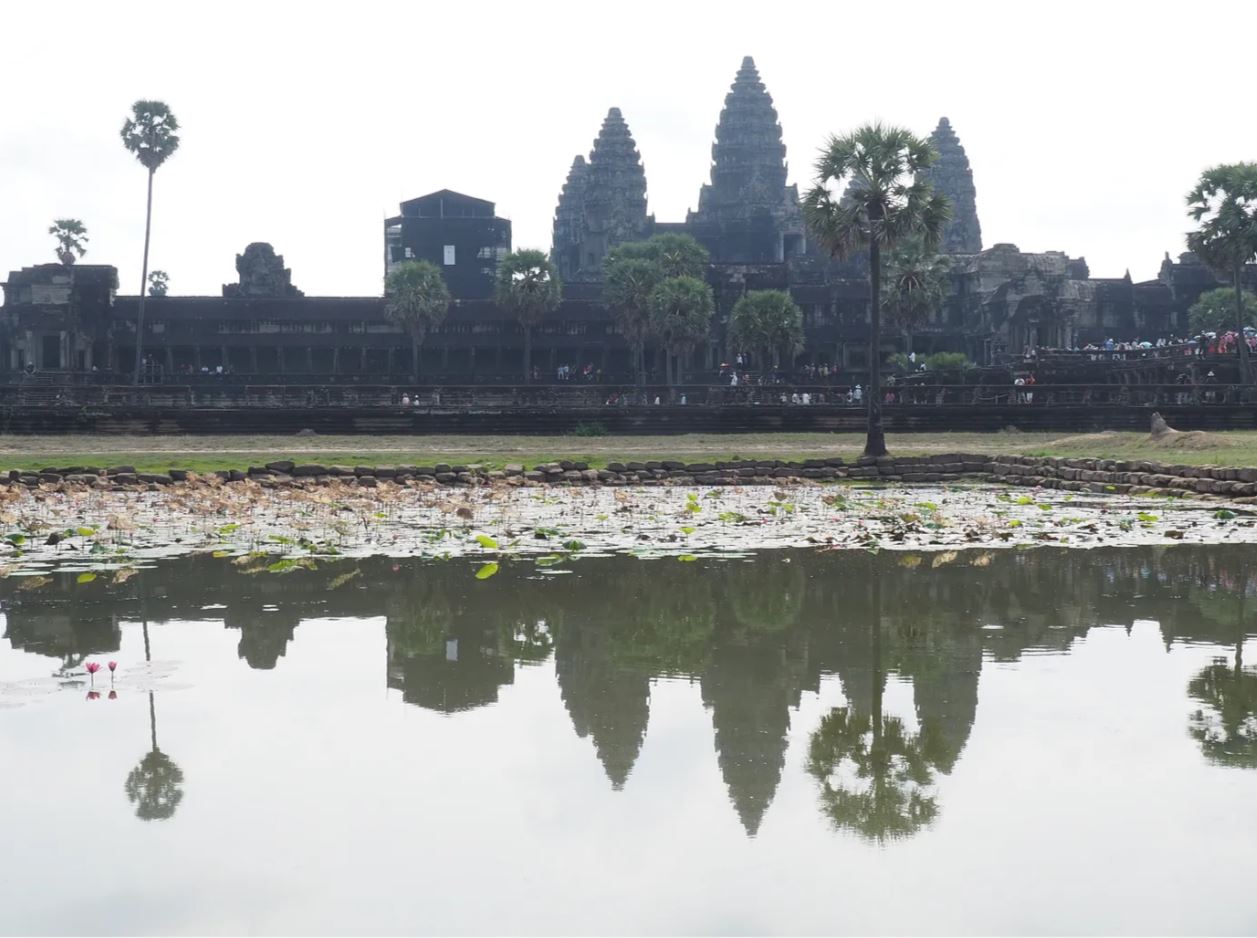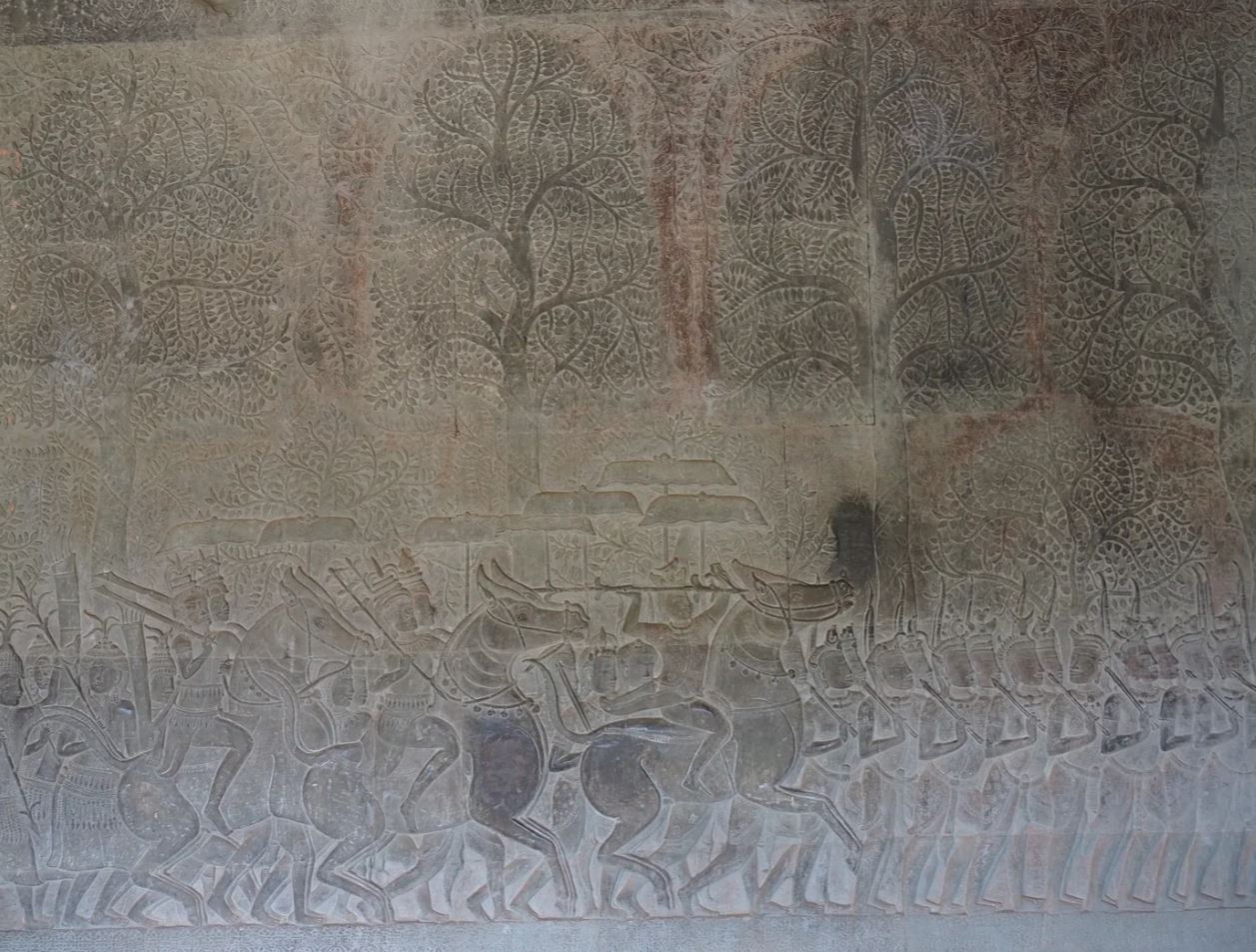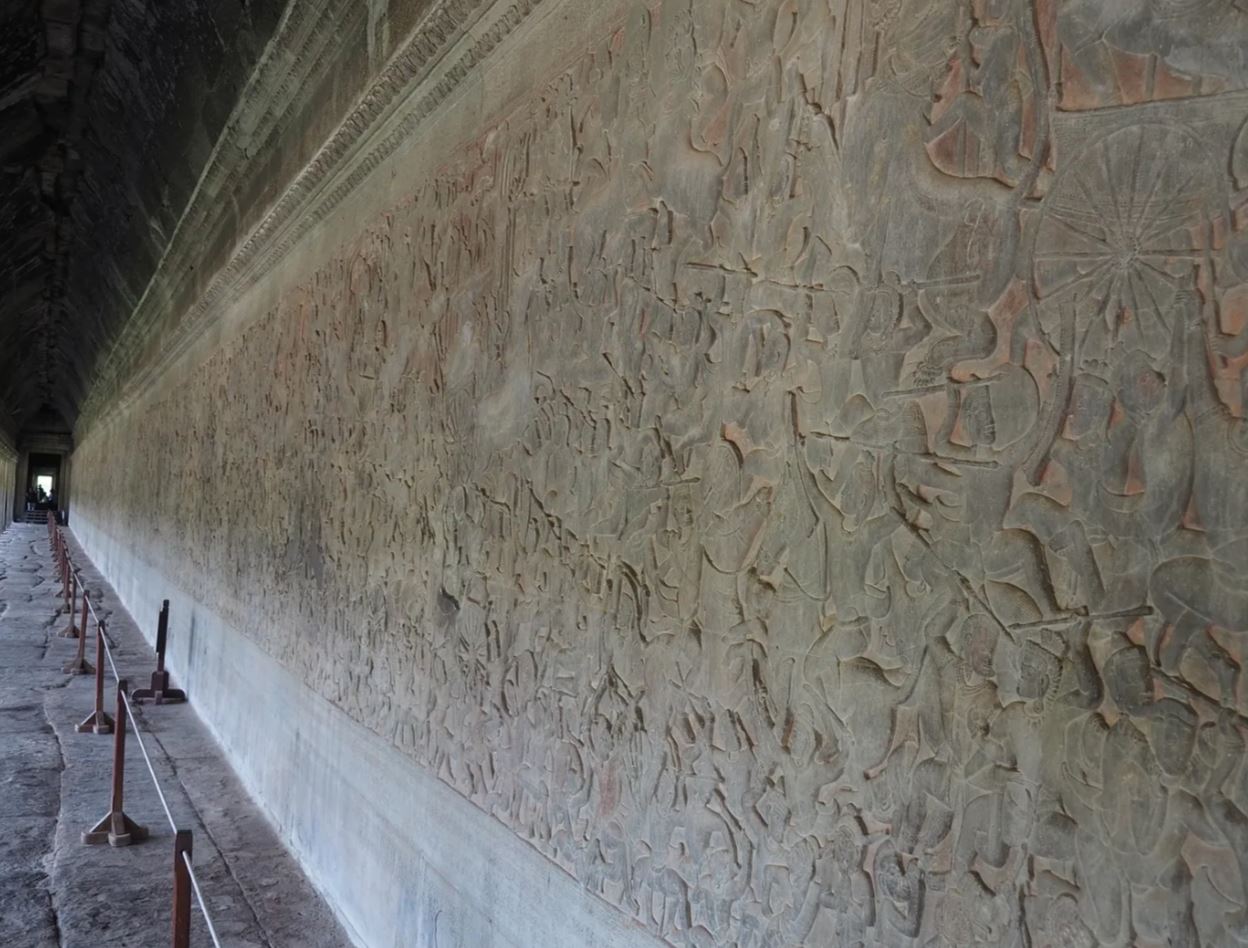
Written By:
David Trubridge
Why is Angkor Wat a dangerous model?

I recently spent two days exploring the ancient Khmer temples around Angkor Wat in Cambodia. Angkor Wat itself is the largest and most recent complex in the area, which is strewn with temples from about 1000 years ago. It was the first one I went to and it was not a good experience. The combination of scorching heat and packed crowds had me running, horrified, for shelter. The curse of World Heritage status! But what disturbed me more was the subliminal message this place is imparting to the eager bus loads of mostly Chinese tourists.
I had made the visit, dutifully accepting of the prevailing canon of the architectural greats. It did not start well as we threaded our way through the hot exhausts of rows and rows of tour buses, then on into the ticket hall, where a melee of crowds merged into many queues forming in front of the ticket booths. Down the road, the entrance gateway into the Angkor Wat compound is small and here lone travelers have to wait politely while noisy, pushy bus-loads force their way through. I ran.
I moved on to the central focus of buildings. In an open courtyard, where the sun beat down brutally on the hot stones, a massive queue of almost entirely Chinese had formed to climb up the steep steps to the top in order to get a ‘commanding’ view. Around this there is an inner gallery. Here, as I admired nearly 400 metres of intricate relief carving, it began to dawn on me: this is more than just a temple, it is also a massive statement of power and aggrandisement.

The reliefs depict thousands of grim-faced robotic warriors marching off to war, followed by the ensuing melee of glorious battle. It betrayed the real reason for this complex: an emphatic statement of power and authority by the ruler, King Suryavarman II. It seems that this panorama is something of a mixture of the king’s own victories and other more mythical ones from the panoply of Hindu mythology. I was reminded of another similar experience in the Vatican. Hoping to see the Sistine chapel, we were forced to follow a maze of corridors full of paintings and loot, all resulting from past victories over the infidel.

In both cases war was being glorified, with religion supplying the moral endorsement for the slaughter and destruction of the inferior ‘other’. Over the past few thousand years, all cultures have formed patterns of beliefs and values which we subconsciously imbibe and accept without question. One of these patterns is the architectural canon which brought me here. But the greatest is the religious one: all three main religions propagate the same message of superiority and moral rightness, not just of human over human, but also of human over nature. The second is ultimately the most damaging.
So what scares me about seeing the crowds flocking to Angkor Wat is this worship of the cult of aggrandisement and moral superiority. It reinforces the pattern in their minds so that they will go home and, if not expect it, at least accept more of the same. If opposing tribes want to beat the shit out of each other, I care little for their stupidity, though I am very sad for all the innocents who will suffer. But I care far more about this continuing mindset of human’s right of “dominion” over the land and all that lives there. It is a pattern that we now know is failing us, and unless we can break out of it, we are doomed (if that seems over gloomy read this.)
On another day I took a long jolting ride in a tuk-tuk out to Kbal Spean in the forested hills north of Siem Reap. As I climbed up the path through the forest, the heat beat down like a hammer and my sweat poured, but away from the pressure of crowds this bothered me less. A bird call, like liquid bubbles of sound, echoed through the trees, interspersed with another that rasped like a metal grinder. At the top I found a small group of carvings in stream-bed rocks, probably made by a hermit about 1000 years ago. The carved reclining deities are small and nestled into the rocks of the stream course. It was the dry season and the flow was almost gone, so that the accompanying ordered rows of lingas were fully exposed.

Here, for me, was a far more valuable paradigm for our times: not a massive statement of human power and achievement, but a humble act of devotion quietly inserted within the natural world. Here I could contemplate human spirituality in its rightful place within nature, not trying to dominate it. There were few crowds and no Chinese to witness this apt message. But at least I felt happy and at home.